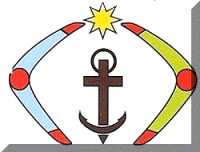
- St. Bega of Saint Bee’s Head – Celtic Saints
7th century; she is probably identical with the Saint Bega celebrated on October 31.
Saint Bega or Saint Bee was an Irish princess, whom a Norwegian prince sought in marriage. She, however, had already pledged herself and her virginity to Jesus and been given a bracelet by an angel marked with a cross as a token of her heavenly betrothal. On the eve of her wedding, as her father and her groom were celebrating in the hall, she escaped with the help of the bracelet. Seated on a clod of earth, she was taken across the sea to the coast of Cumberland.
There she lived as an anchoress, who was fed by the wild birds and, if left in peace, would have continued in this fashion. After being attacked by marauders, King Saint Oswald of Northumbria advised her to enter a convent. She therefore received the veil from Saint Aidan and established a monastery at Saint Bees (Copeland near Carlisle) which later became a cell of the great abbey of Saint Mary at York. […] https://celticsaints.org/2021/0906a.html
2. St. Maccallin of Lusk – Wikipedia
“Much uncertainty exists in the texts and traditions which remain, regarding the time when the patron saint of Lusk thrived…”, writes John O’Hanlon in his Lives of the Irish Saints (1873). According to the O’Clerys, he was descended from Tadhg, son of Cian, son of Oilill Olum, King of Munster (died 234). Some writers claim the saint was the son of Cathmoga or Cathbad, however his father was most likely a man named Cullin, based on his name. Cainnigh, Caindigh, or Caindedh was claimed to be his given name.
Macculind was instrumental in the establishment of numerous churches and monasteries. He left Leinster to follow Saint Gregory in the district of “Carbrinum”, where he studied theology and the Bible. Both in Ireland and during a visit to Scotland, he is said to have performed several marvels. He is also supposed to have travelled to Rome, where Pope Gregory ordained him as a bishop before sending him back to his province. He proceeded to Durpconyle, where he erected a monastery, and also to Albamene, where he founded a monastery. He is reported to have founded twelve monasteries in total.
Macculind advanced to the position of bishop of Lusk . According to the Denegal Martyrology, MacCuillinn of Lusk was told by Odrhan of Lettrock that Claran’s life would be cut short. According to S. Maculin of Lusk’s Acts, “he visited Scotland twice, and was esteemed there,” according to Trinity College Dublin. St. Macculindus, bishop of Lusk, died in 497, according to Alban Butler, who references Colgan’s manuscript. His commemoration is September 6. He appears to have died in 496, not 497, as some sources suggest..[..] St. Maccallin of Lusk – Wikipedia
3. St. Magnus of Fussen, Abbot
(Magne, Magnoaldus, Maginold, Mang)
Saint Magnus of Füssen, otherwise Magnoald or Mang, was a missionary saint in southern Germany, also known as the Apostle of the Allgäu. He is believed to have been a contemporary either of Saint Gall (died 627) or of Saint Boniface (died 754) and is venerated as the founder of St. Mang’s Abbey, Füssen.
Life:
There is almost no reliable information about him,. The only source is an old “Vita S. Magni,” which, however, has so many evident anachronisms that it can’t be trusted. It is said that Saints Columbanus and Gallus, two Irish missionaries, spent time with Willimar, a priest in Arbon. Gallus fell ill here and was entrusted with the care of Magnus and Theodore (Magnoald and Theodo), two clerics who lived with Willimar, while Columbanus went to Italy and founded Bobbio Abbey. When Gallus was mysteriously informed of Columbanus’ death, he sent Magnus to Bobbio to pray at his grave. Magnus returned with Columbanus’ staff, and thereafter they followed his rule. After the death of Gallus, Magnus succeeded him as superior of the cell. …[..]St. Magnus of Fussen, Abbot Wikipedia
Died 633. Saint Columbanus’ monastery at Luxeuil was such a source of holiness that by the mid-seventh century it was the most important one in France. It produced a stream of saints who led the clergy and people to new height of spiritual awareness. Two of these men were brothers, Saints Faro and Cagnoald, sons of King Dagobert’s chancellor. Faro became bishop of Meaux, while Cagnoald was bishop of Laon (their sister, Saint Burgundofara (April 3) founded the convent of Faremoutiers). When Columbanus angered King Theodoric II by criticizing his immoral life, he was banished from his realms in 610. Saint Cagnoald left his see, followed Columbanus, and worked with him as a missionary near Lake Constance. When Theodoric gained control of that area, too, they were again banished….[..] St. Chainoaldus of Laon Celticsaints.org
7th century. Saints Felix and Augebert were Englishmen sold into slavery
emrys Sat, 05 Sep 2009 02:22:01 -0700 Ss. Felix and Augebert @yahoo groups
in France and ransomed by Saint Gregory the Great. They were among the
many redeemed by the pope to be trained to become missionaries in their
homeland. The Pope’s plan began to take shape when Felix was ordained to
the priesthood and Augebert to the diaconate. Unfortunately, they were
martyred by pagans at Champagne, France, before they could fulfil his
dream (Benedictines).
mail-archive.com/celt-saints@yahoogroups. 2009. [celt-saints] 6 September. [ONLINE] Available at: https://www.mail-archive.com/celt-saints@yahoogroups.com/msg00650.html. [Accessed 6 September 2021].

